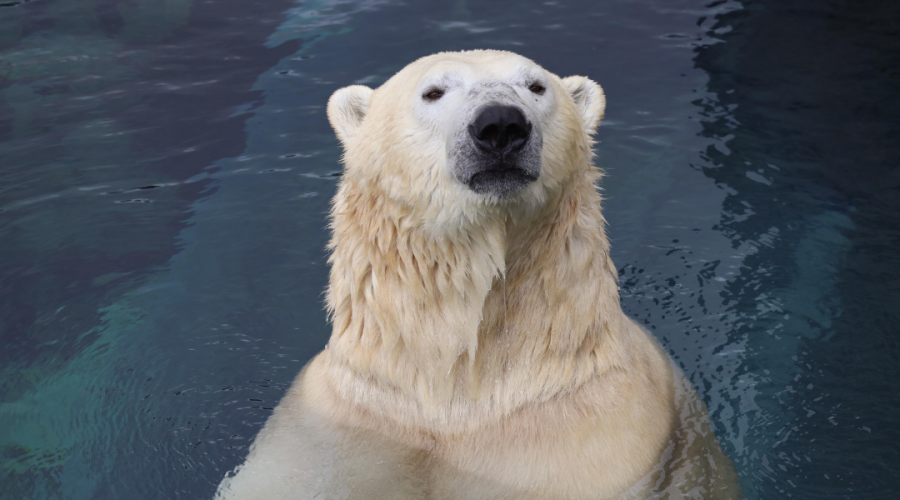As the snow melts and the days grow longer, Manitoba will be changing with new sights and sounds as migratory species return to the province and others wake up from hibernation. Each spring, over 300 bird species make their way back to our province, many of which travel thousands of kilometers from their wintering grounds and rely on Manitoba’s summer habitats for nesting and food. At the same time, hibernating animals such as bats and ground squirrels are emerging, signaling the return of warmer temperatures and the start of a new season of wildlife activity.

White-throated Sparrow, one of the earlier migrants that will be returning to Manitoba. Photo credit: Kirstyn Eckhardt.
In places like Wapusk National Park in northern Manitoba near Churchill, some species make incredible migrations. The Arctic Tern will travel to Manitoba from Antarctica, a round-trip journey totalling over 80,000 km, and over its lifetime could travel as many as 2 million km! Later in the year, over 50,000 Beluga Whales (the largest population of Beluga Whales in the world) will make their way to waters around Churchill and western Hudson Bay for the summer, traveling over 1,000 km from their wintering grounds in Hudson Strait.
Closer to home, we can look for species like warblers and shorebirds that will be making a return to southern Manitoba from their winter habitats in South America and the United States, or making stops here on their way further north. Purple Martins and Chimney Swifts, for example, will migrate this spring from South America and call Winnipeg home for the summer, while American Golden Plovers will pass through and rest in southern Manitoba as they make their way to the High Arctic. Some species, like the Piping Plover and Baird’s Sparrow, are under threat of extinction in Manitoba, making conservation efforts more critical than ever.
You can also keep an eye out for hibernators like ground squirrels, bats, and woodchucks making a reappearance this spring from their winter slumbers in caves and underground burrows. Reptiles and amphibians survive the winter in a state of brumation (the cold-blooded animal’s version of hibernation) or by allowing themselves to freeze. Snakes and some turtles spend the winter in underground dens or burrows below the frost line, while certain frogs, like Wood Frogs, produce natural cryoprotectants (antifreeze) that allow them to partially freeze and thaw in spring.

Prairie Skink. Photo credit: Kirstyn Eckhardt
Why Conservation Matters
Migration and hibernation are not just survival strategies, they actively shape and support healthy ecosystems. Bird species return to Manitoba to nest and raise their young, playing a crucial role in maintaining healthy food webs. Bat species, some of which overwinter elsewhere while others hibernate in caves, help control insect populations in the summer. Migrating species are incredibly important to the ecosystem, as integral parts of the food web, seed disbursers, and for keeping insect populations in check. Manitoba is also home to approximately 10% of Canada’s endemic species, meaning these species are found only in Canada and their protection here is key to ensuring their survival.
Migration and hibernation are becoming increasingly challenging for many species due to habitat loss, climate change, and human-made obstacles. For migratory species, light pollution and tall buildings make navigation difficult, while habitat destruction threatens key stopover sites. Hibernating species face risks as well: warmer winters can disrupt their hibernation cycles, causing them to wake too early when food is scarce, and habitat loss reduces the safe spaces they need to overwinter. Protecting natural areas, minimizing disturbances to known migration routes and hibernation sites, and supporting conservation efforts that preserve ecosystems are all crucial to supporting these species.
At Assiniboine Park Conservancy, our Conservation and Research Department is working to better understand and protect migratory species. Our team participates in programs that track bird migration routes by maintaining a Motus Wildlife Tracking System on the roof of the Qualico Family Centre that can detect tagged birds and help researchers all over the world to better understand their movements. We also collaborate with other researchers and conservation organizations across North America to monitor migrating species and study how climate change is shifting migration patterns.
What You Can Do
- Create bird-friendly spaces by making your windows visible to migrating birds to prevent them from colliding with the glass. Find more information here.
- Turn off unnecessary outdoor lights during peak migration times to help birds navigate safely.
- Avoid pesticides that harm pollinators and insect-eating animals.
- Leave leaf litter, fallen logs, and brush piles undisturbed to provide overwintering habitat for hibernating amphibians, reptiles, and insects.
- Enjoy the return of these migrating and hibernating species by trying to find them in your neighborhood. Join community science efforts by documenting wildlife on iNaturalist or eBird to help researchers track their movements over time.
By protecting Manitoba’s species, we’re not just helping wildlife, we’re ensuring healthy ecosystems for future generations. This spring, take a moment to look around and appreciate the incredible migrations and hibernations happening all around us!




